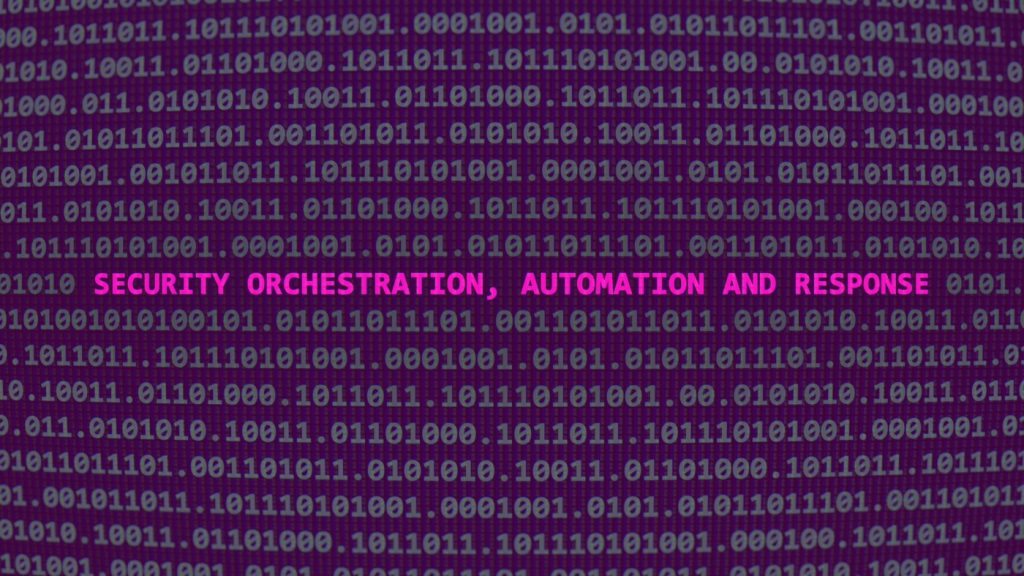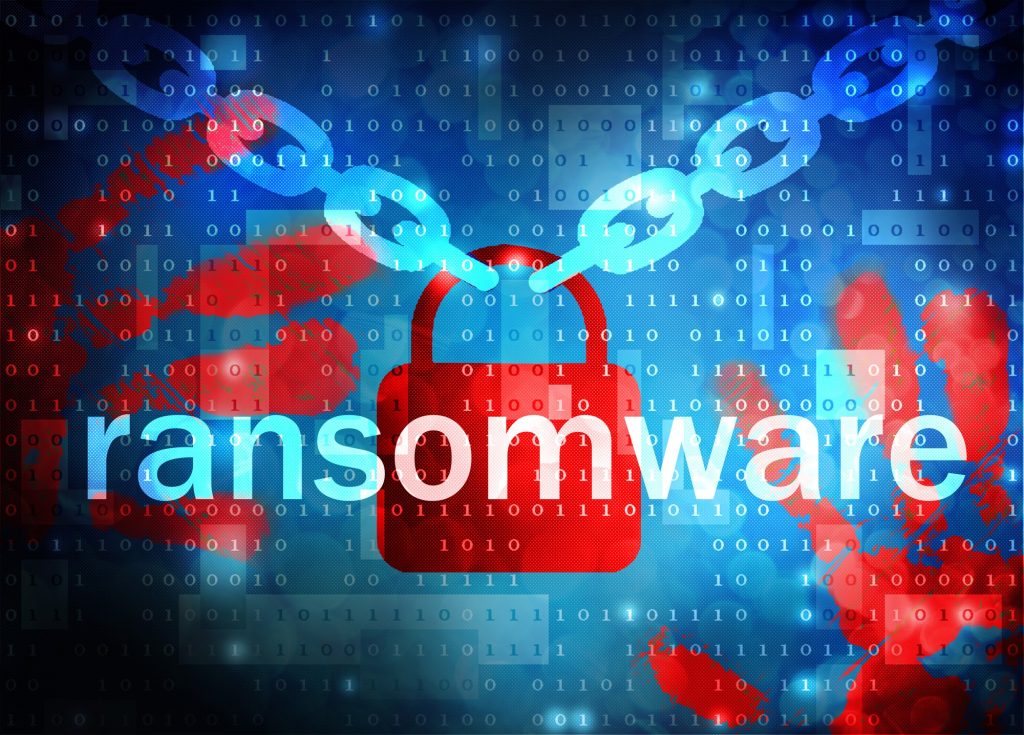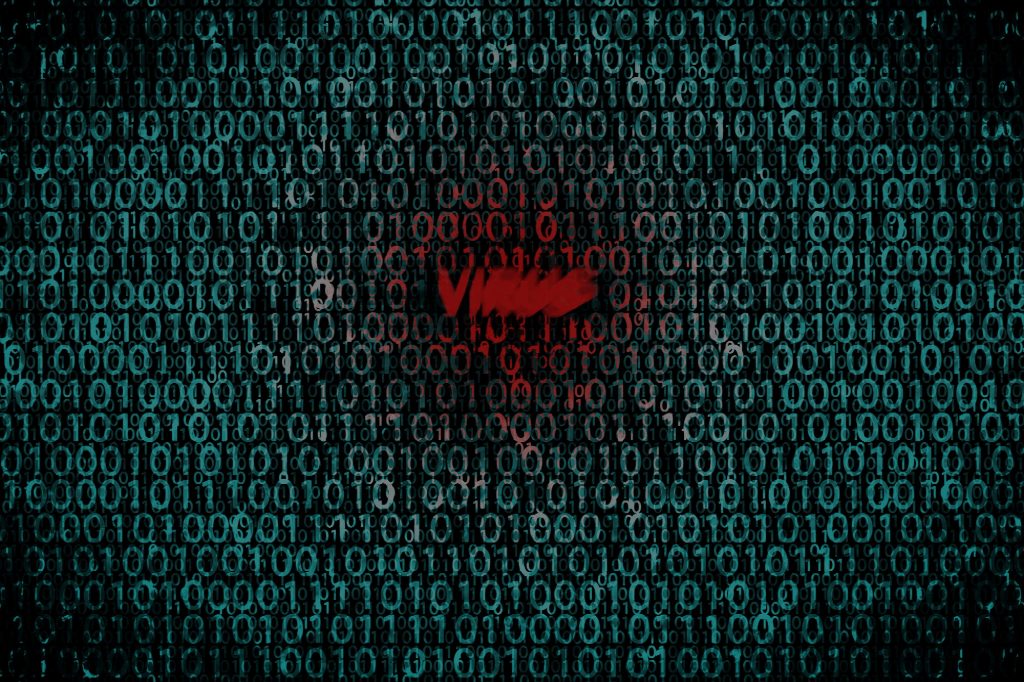IT teams are tasked with monitoring data from so many sources, there’s risk of information overload without security orchestration, automation, and response (SOAR).

A SOAR platform pulls together software designed to bolster organization’s security posture so your IT team can keep on top of all the data coming in from your various IT systems and threat intelligence platforms.
SOAR is a must-have tool in today’s dynamic digital business landscape – it allows IT teams and security analysts to be more efficient and responsive and reduces the need for human intervention.
ABCs of SOAR
A SOAR platform allows your security team members to prioritize their attention by collecting threat information, automating routine responses, and triaging more complex threats that pose a real danger to the organization.
SOAR software has three core capabilities. It manages threats and vulnerabilities, responds to security incidents, and automates security operations. The goal is to collect as much data as possible and automate as much as possible by leveraging machine learning technology.
The “orchestration” in SOAR coordinates all your security and productivity tools so they can communicate – much like a conductor guides an orchestra of many different musicians. The coordination of firewalls and intrusion detection tools and streamlined security processes allows for a centralized response.
That response is automated wherever possible as to reduce the burden on your IT staff. The final response is also automated as much as possible, although SOAR provides the data necessary for people to intervene when necessary.
SOAR follows the rules
A SOAR platform knows what to do because it’s guided by a playbook which outlines your standardized response processes for security incidents – these standards allow you to prioritize your response to any threat and enables efficient collaboration. It is also integrated with your complementary security tools, including Security Information and Event Management (SIEM).
By using a SOAR platform to automate the ingestion of data and incident response as much as possible, your security team can keep pace with the onslaught threats. By leveraging machine learning, SOAR not only automates your security response, but also improves your readiness because it’s learning from historical data over time to anticipate threats before they happen.
How to start with SOAR
You can’t automate security when you don’t have in place it. If you want to fully benefit from the automation provided by a SOAR platform, you need to have the right security tools, process, and playbook already in place.
A managed service provider with a focus on security can help full flesh out your security operations, including development of workflows and a security playbook, so you can effectively implement a SOAR platform and reap the benefits that come with its automation and response capabilities.
More security tools don’t automatically mean your business is fully protected – blowing the budget on cybersecurity will have diminishing returns. You need to spend smarter, especially if your budget is constrained.

In addition to having the right technology, you need to have proper framework to guide your security investments. These frameworks include how you manage user onboarding, remote access to your network and who’s allowed to spin up new applications in the cloud. Having accurate and transparent guidelines for how employees work will enable to be precise with your security investments.
You must also understand your organization’s attack surfaces – operating systems, device types including employee laptops and smartphones, cloud technologies, browsers and email clients will all determine how you spend your budget for security. They are all vectors for threat actors to exploit.
It’s critical that you must implement effective controls to protect applications and data and a method of ensuring they are functioning consistently and effectively. Most of all, you must look for opportunities to automate because one of the biggest line items in your security budget is people.
Consider all points of access
Your controls for protecting applications and data should be ready to confront ransomware, malware, distributed denial-of-service (DDOS) attacks, internal threats due to disgruntled employees and human error, bearing in mind that each vulnerability is a doorway that opens wider access to your IT infrastructure. These controls must be ready to deal with a dynamic landscape as threat actors are constantly changing their tactics and techniques and consider every access point an opportunity.
Even if you’ve fully leveraging cloud technologies to run your business, you can’t depend fully on your cloud service provider to secure your applications and data – you need to understand where their responsibilities end and yours begin. If you’ve not moved to the cloud, doing so can help you get more for your security budget.
Prepare for a breach
Even if you’re confident that you’ve enabled all the proper controls, your security budget should account for a data breach – you need to assume that a threat actor might gain initial access and be ready to mitigate and learn from the attack.
One way to ready yourself for a breach is to fully understand what’s normal for your organization. It’s easier to spot malicious activity when you have a baseline for what is standard operating procedure. Having the right endpoint detection and response (EDR) tools go a long way to providing the necessary visibility to proactively protect your data and applications. You must also remember that each system comes with its own settings and best practices that contribute to your overall security.
Automation pays off
Given everything you must monitor and control and assuming it’s just a matter of when not if a breach occurs, you must automate wherever possible if you’re to attain maximum protection and resiliency within a constrained security budget. Even if the sky was the limit, the competition for cybersecurity talent is fierce.
You can’t detect, manage, mitigate, remediate, and maintain an adequate security posture without automation. You must be able to update software, firmware, and patches automatically as much as possible while also track the behavior of every asset over time so you can maintain their security consistently as employees come and go and passwords are changed.
You can best get the most of your security budget through automation by doing it in concert with your broader IT systems, especially those already set up to track your assets. Cloud-based technologies can also aid in mapping and scoring your security budget.
If you’re a smaller organization, you should consider turning to a managed service provider to help with you automate as well as evaluate your security frameworks and tools. They can take on many aspects of data and application protection, help you redeploy your staff most effectively and get you the biggest bang for your security budget.
- December 15, 2022
- Catagory cybersecurity
How Cybersecurity is Shaping Up for 2023
Remote work during the pandemic and the current dynamic of hybrid workplaces has had a strong impact on how you must manage cybersecurity. Remote work isn’t going away, while other longstanding trends as well as new realities will affect cybersecurity in 2023.
Ransomware remains a major threat

Expect ransomware attacks to continue to be a factor in your cybersecurity planning, as threat actors move from encrypting files to targeting third-party cloud providers while continuing to use aggressive, high-pressure tactics to extort victims, including data-encrypting malware and more novel infiltration approaches.
Global geopolitics will affect your business
The ongoing conflict in Europe will mean some of those ransomware threats will come from Russia. Overall, 2023 is going to begin with a great deal of uncertainly and tension, with more state-sponsored threat actors looking to destabilize global economies and specific industry sectors such as logistics and shipping, energy, semiconductors, and financial services.
Zero Trust adoption will grow
With more workloads being moved to the cloud, a Zero Trust approach to security will become more compelling and necessary in 2023, transforming how you secure your infrastructure, including network penetration testing.
Automation will increase, too
It’s near impossible for organizations of any size regardless of budget to keep up with the volume of threats, which means 2023 will see even more automated cybersecurity, enabled by artificial intelligence (AI) and machine learning. The downside is the bad guys can leverage automation and AI, too, which means organizations will need to take a more active approach to cybersecurity.
Watch out for bots
Speaking of automated bad guys, be prepared for more bot activity in 2023, which can automate and expand attacks as perpetrators rent out IP addresses to make it difficult to track them.
Your own IT is a threat
Between shadow IT and the proliferation of endpoints either due to remote work or internet of things (IoT), there’s no shortage of attack surfaces for threat actors in 2023. If your endpoints aren’t properly configured and you’re not keeping a handle on shadow IT, your cybersecurity posture will be drastically weakened.
You people can still be a problem
Even with all the right technology in place, the biggest threat cybersecurity in 2023 will continue to be your own people, whether it’s by accident or due to insider threats from unhappy or former employees. Training combined with a Zero Trust approach will mitigate risk to your business.
What won’t change in 2023 is that cybersecurity isn’t something most organizations can handle on their own, so if you haven’t already, make it the year you see how a managed service provider can help evaluate and shore up your security posture.
- September 16, 2021
- Catagory Security
Stay mindful of security misconfigurations as remote work continues
Security misconfigurations continue pose to a threat to organizations, and remote work hasn’t helped. However, how you configure cloud security is just as critical as end user behaviour.
The shift to remote work not surprisingly has led to a spike in cyber attacks just as organizations were spurred by the pandemic to accelerate adoption of the cloud. These conditions mean security misconfigurations can have an even bigger impact on overall security posture.
Threat actors are drawn to security misconfigurations

As remote work continues and endpoints flourish for other reasons, such as IoT and edge computing deployments, it’s essential to have a full inventory of all your internet-connected digital assets, whether it’s the laptops of your remote workforce or the cloud applications they’re accessing. Threat actors are working hard to compromise all your digital assets, and security misconfigurations for a single cloud application can give them an opening to gain broader access to your infrastructure.
Security misconfigurations are ultimately a form of human error, which are generally a bigger threat to your organization than technology flaws and failures. Among the ones to be mindful of are forgetting to remove unused access permissions, setting up incorrect access, or creating overly permissive rules. Even before the massive shift to remote work, network infrastructure even small and medium businesses have become increasingly dynamic with the adoption of the cloud and mobile technologies.
Having strong policies as a baseline combined with automation can help you avoid security misconfigurations that lead to costly data breaches.
Automation requires visibility
Automation is essential if you want to stay ahead of threat actors, but you to have visibility into the devices, assets, and processes before you do it.
One thing you must watch out for is shadow IT, whether it’s software or hardware. Employees or even lines of business sometimes find their own solutions out of expediency without understanding their impact and the doors that are open to hackers due to security misconfigurations. These either need to be excised from your organization or made officially part of your digital asset inventory. You need to fully understand what your inventory is and conduct regular updates, especially as remote work continues, and employees come and go.
Having the right people in place can also help you avoid security misconfigurations, whether it’s cybersecurity specialists or making sure all employees have a solid understanding of good security hygiene. However, there’s only so much internal talent development can do given all the pressures faced by an IT team today, and good security people are in high demand.
Given these challenges, you should consider tapping into the expertise of a managed security services provider that can help you evaluate your infrastructure, develop strong policies, and implement automation so you can mitigate the impact of security misconfigurations.




 Latest Blogs
Latest Blogs FAQ
FAQ